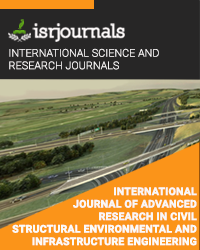study on self compacting concrete using industrial waste materials
P.MANI RAHUL,R.Nandha Kumar
Published in International Journal of Advanced Research in Civil,Structural,Environmental and Infrastructure Engineering and Developing
ISSN: 2320-723X Impact Factor:1.7 Volume:3 Issue:1 Year: 03 March,2017 Pages:357-363

Abstract
A self-compacting concrete (SCC) is the one that can be placed in the form and can go through obstructions by its own weight and without the need of vibration. Since its first development in Japan in 1988, SCC has gained wider acceptance in Japan, Europe and USA due to its inherent distinct advantages. The major advantage of this method is that SCC technology offers the opportunity to minimize or eliminate concrete placement problems in difficult conditions. It avoids having to repeat the same kind of quality control test on concrete, which consumes both time and labor. Construction and placing becomes faster & easier. It eliminates the need for vibration & reducing the noise pollution. It improves the filling capacity of highly congested structural members.SCC provides better quality especially in the members having reinforcement congestion or decreasing the permeability and improving durability of concrete. The primary aim of this study is to explore the feasibility of using SCC by examining its basic properties and durability characteristics i.e. water absorption, shrinkage, and sulfate resistance. An extensive literature survey was conducted to explore the present state of knowledge on the durability performance of self-consolidating concrete. However, because it usually requires a larger content of binder and chemical admixtures compared to ordinary concrete, its material cost is generally 20-50% higher, which has been a major hindrance to a wider implementation of its use. There is growing evidence that incorporating high volumes of mineral admixtures and micro fillers as partial replacement for Portland cement in SCC can make it cost effective. However, the durability of such SCC needs to be proven.
Kewords
scc, noise pollution, water absorption, shrinkage, sulfate resistance.
Reference
1. M. S. SHETTY Concrete Technology, by S. CHAND Publisher. 2. EFNARC (www.efnarc.org) 3. SUBRAMNIAN. S. CHATTOPADHYAY. D. "Experiments for mix- proportioning of self-compacting concrete", The Indian Concrete Journal, Jan 2002. 4. Indian Standard Codes for Concrete & Guidelines. 5. CHAMPION, J. M. and JOST, P., Self-compacting concrete: Expanding the possibility of Concrete Design and 6. HEINE, HANS J. "Saving Dollars Through Sand Reclamation - Part 1,” Foundry Management and Technology. (May, 1983), pp. 7. HENDERSON, N. "Self-compacting concrete at Millenium point", CONCRETE, vol.34, No. 4, April 2000, pp.26-27. 8. KAMESWARA RAO, C.V.S (1983) "Analysis of Some Common Workability Tests". Indian Concrete Journal. 9. KATHY STANFIELD, "Self-compacting concrete a Growth area", The Str.Engg., Vol. 76, Nos 23 and 24 10.NAGATAKI, S. and FUJIWARA, H. "Self-compacting property of Highly-Flowable Concrete" ICI Journal July-September 2002. 11. KLAUS HOLSCHEMACHER, "Structural Aspects of Self- compacting concrete", NBM & CW, July 2002 12. MAHINDRAKAR A.B. Research work Study on Red Mud by, KLESCET, Belgaum, 1999 . 13. MEHTA, P.K., Concrete structure: Properties and materials, Prentice Hall, 1986. ICI Journal July-Sep 2002. 14. MICHEAL J. CAMPION and PHILLIPPE JOST, "Self-compacting concrete", Concrete Int. 2000. 15. OKAMURA (1997), "Self-Compacting High Performance concrete", Concrete International, Vol. 19, No. 7.

